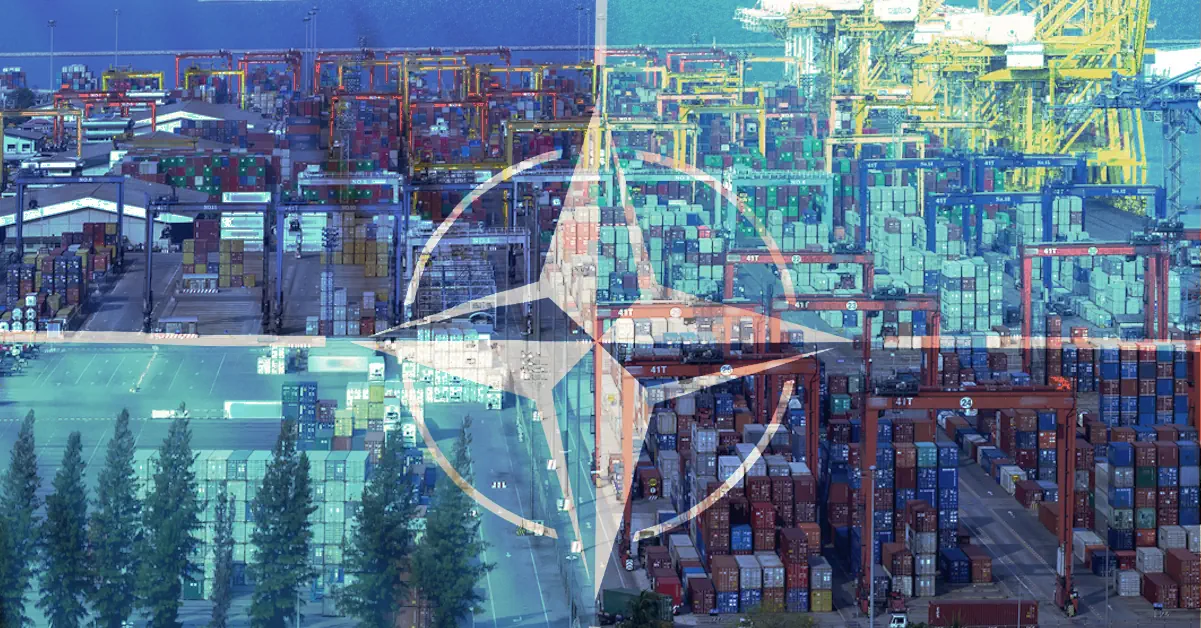Have you ever considered how vital maritime ports are not just for trade but also for national and global security?

This image is property of industrialcyber.co.
NATO’s Warning on Cyberattacks
Recently, NATO issued a critical alert regarding the rise of state-linked cyberattacks targeting European civilian ports. These ports play an essential role in global trade and military logistics, making them particularly attractive to cyber adversaries. The situation requires urgent attention, given the evolving nature of warfare, which increasingly intertwines digital and physical realms.
The Threat Landscape
The NATO Cooperative Cyber Defence Centre of Excellence (CCDCOE) has carefully monitored the situation and identified a worrying trend. Actors linked to countries such as Russia, Iran, and China are ramping up their cyber activities against port facilities. These attacks are not merely theoretical; they have been felt across various countries in Europe.
Recent Experiences of EU Countries
In a recent survey, most European countries reported experiencing cyberattacks in the last five years. Access control and vessel traffic management systems emerged as the primary vulnerabilities, highlighting the need for robust defenses. The implications of these threats extend beyond immediate disruptions—they pose a risk to the secure flow of goods, impacting economic stability and national security.
Gaps in Current NATO Maritime Strategy
One of the alarming findings from NATO’s analysis is the absence of formal frameworks designed to engage commercial port operators. This gap is particularly concerning for maritime security and logistics. In an age where cybersecurity should be integrated into all aspects of national defense, the current maritime strategy, established back in 2011, is woefully outdated.
Hybrid Warfare: Blending Cyber and Physical Operations
The nature of warfare has transformed significantly, with hybrid tactics becoming increasingly prevalent. Hybrid warfare encompasses not just physical confrontations but also coordinated cyber operations. This convergence raises questions about the effectiveness of the existing strategies used to protect both military and civilian maritime interests, which must work in tandem for a comprehensive defense.
Cyberattack Methods on the Rise
NATO’s report emphasizes prevalent cyberattack methods that further complicate the situation. Some of the most common techniques include:
| Cyberattack Method | Description |
|---|---|
| Denial-of-Service Attacks | Overwhelming website or network services to render them inoperable. |
| Data Breaches | Unauthorized access to confidential information, often resulting in data theft. |
| Phishing | Deceptive attempts to acquire sensitive data, typically through fake emails. |
| Ransomware | Malware that locks users out of their data or files, demanding a ransom for access. |
The prevalence of these attack methods highlights the complex cyber threats facing organizations today, especially in critical infrastructure sectors like ports.
State-Sponsored Groups Targeting Logistics
Another significant concern is the intensified cyber operations conducted by notable groups such as APT28, also known as Fancy Bear, which is linked to Russian intelligence. Since the invasion of Ukraine, this group has notably increased its focus on logistics and transport sectors, raising the stakes for port facilities that are integral to military and commercial supply chains.
Shortcomings of Current Cybersecurity Frameworks
Currently, the cybersecurity frameworks in place primarily focus on physical threats. This oversight leaves a significant blind spot regarding cyber risks, which are often overlooked. Ports must not only guard against physical breaches but also implement protective measures to counter cyber threats effectively.
Revising NATO’s Maritime Strategy
In light of these challenges, NATO’s report strongly recommends a timely revision of its maritime strategy. This adaptation should focus on integrating cybersecurity concerns and enhancing cooperation between military and civilian stakeholders.
Enhanced Cooperation & Intelligence Sharing
An actionable approach includes establishing improved threat intelligence-sharing networks. By sharing information about potential threats and vulnerabilities, countries can bolster their defenses significantly. Additionally, engaging in regular joint cyber exercises among involved parties is essential for preparedness.
| Recommended Action | Description |
|---|---|
| Establish Threat Intelligence Networks | Facilitate sharing data on threats among stakeholders. |
| Joint Cyber Exercises | Conduct simulations to practice responses to cyber incidents. |
| Enhanced National Frameworks | Develop robust national cybersecurity policies to protect infrastructure. |
The Need for Enhanced National Frameworks
The urgency for developing enhanced national frameworks can’t be understated. Governments must foster cooperation in responding to cybercriminal threats that target critical infrastructure, especially maritime ports. This collaboration can significantly reduce vulnerabilities and improve overall security.
Integrating Cybersecurity into Maritime Defense
Finally, the importance of integrating cybersecurity into maritime defense strategies has never been more evident. Cyberattacks pose a clear and present danger, and port facilities must be equipped to handle both conventional threats and cyber warfare. By evolving our understanding and strategies, we can ensure the stability and security needed for a safe maritime environment.
Conclusion: Facing the New Threat Landscape
As NATO and various European countries prepare to tackle these emerging threats, understanding the evolving landscape of cyber warfare is pivotal. The integration of effective cybersecurity measures into maritime operations can enhance resilience against state-sponsored and non-state actors aiming to disrupt the fabric of global trade and national security. By addressing these issues now and fostering collaborative networks and strategies, we strengthen our collective ability to withstand future attacks.
Reflect on how these developments impact your perspective on international security and the role of ports in global trade and military logistics. Being aware and informed about these issues is the first step in contributing to a safer, more secure maritime environment for everyone.